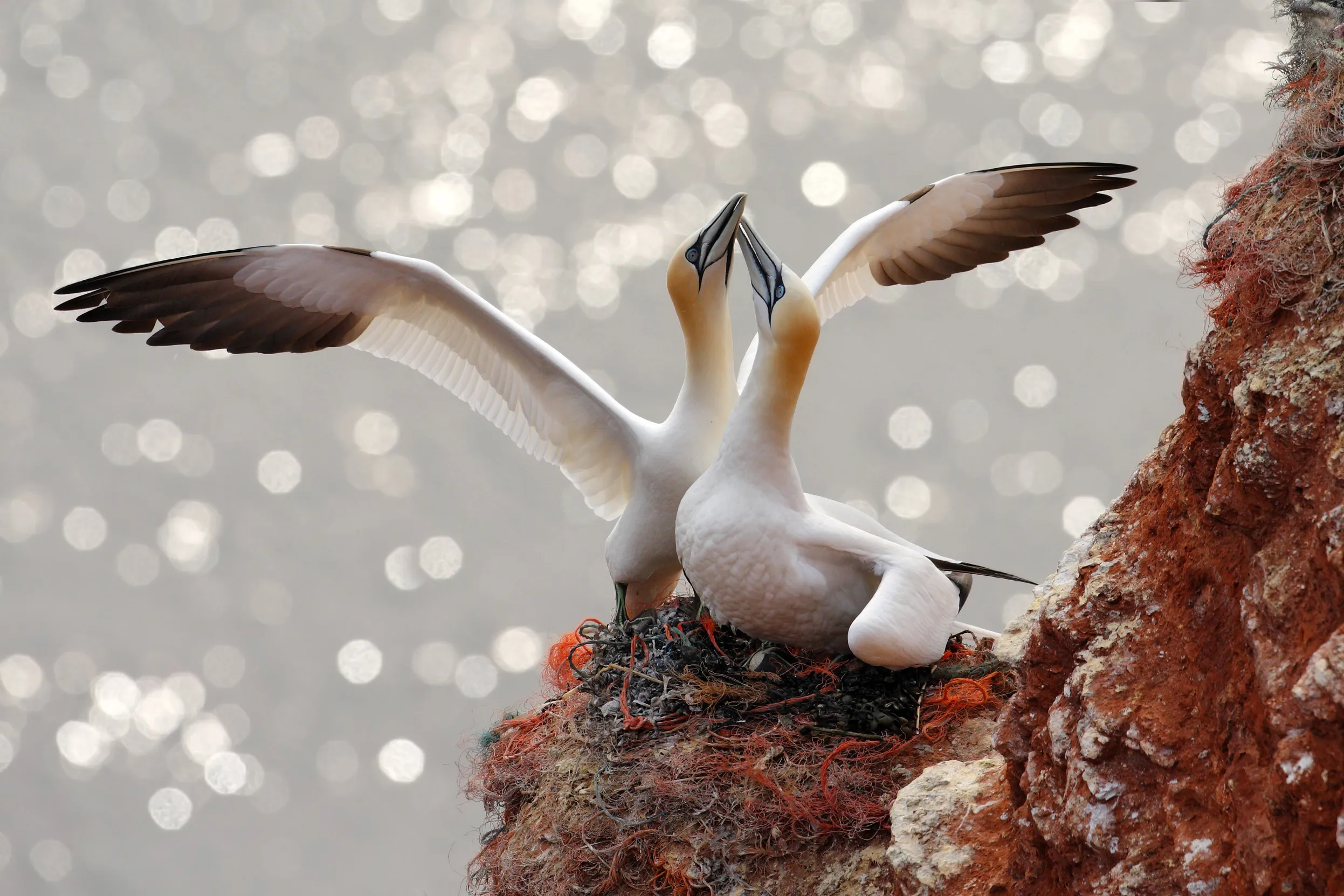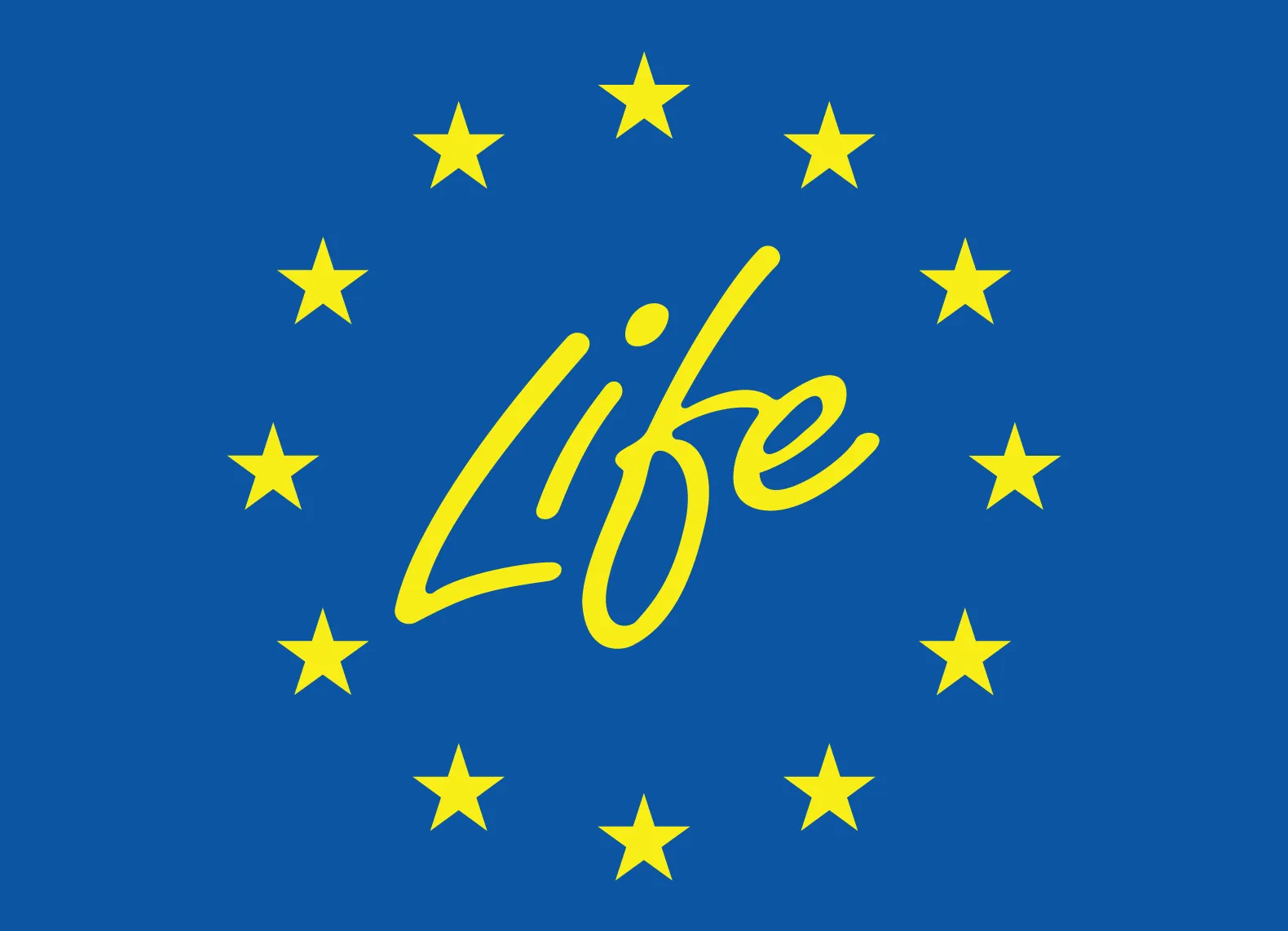EU LIFE funding
The EU’s LIFE programme was a vital funding source for the RSPB and other UK environmental organisations between its creation in 1992 and the UK’s departure from the EU in 2020. Its grants funded more than 30 large RSPB projects.

On this page

LIFE 100% Favourable
This project is working to boost the condition of key ‘features’ (i.e. habitats and species populations) on ten of the RSPB’s Scottish nature reserves. It’s called ‘100% Favourable’ because, if it’s successful, it will lead to all the most important features on our reserves in Scotland being officially classified as in ‘favourable’ condition. Most of these features are already in this category, but this project will allow us to ‘complete the set’.

The project is divided into 11 sub-projects, which are:
- On Islay and Oronsay, we’re helping Choughs by building wooden shelters for them to nest in and increasing the populations of the insects and worms they feed on.
- At Kirkconnell near Dumfries, we’re improving saltmarsh by upgrading access and making it easier for cattle to graze where needed.
- At Mersehead, also near Dumfries, we’re restoring the saltmarsh by removing scrub from dunes and using grazing to stop it returning.
- At Culbin Sands near Nairn, we’re protecting sand and shingle dunes by removing scrub and trees.
- At Loch Lomond we’ve bought a low-ground-pressure tractor to help us improve feeding habitat for Greenland White-fronted Geese.
- On Tiree, we’re removing vegetation from gravel areas used by nesting Little Terns and Ringed Plovers.
- At Inversnaid to the east of Loch Lomond, we’re installing fencing to stop deer and goats eating young trees.
- At Nigg and Udale Bay in the Cromarty Firth, we’re keeping non-native cord grass under control to stop it taking over mudflats and saltmarsh.
- On the Insh Marshes near Aviemore, we’ve introduced Konik Ponies to improve fen habitat.
- At Abernethy a few miles to the north-east, we’ve established a tree nursery to help us maintain and expand montane willow habitat.
- Also at Abernethy, we’re trialling mowing and grazing to see which is best for improving Capercaillie habitat.
Curlew LIFE
The call of the Curlew bubbles through our uplands and across our estuaries, but populations have been in steep decline since the 1980s, particularly in Northern Ireland and Wales. This decline has been attributed to low breeding success caused by the loss of habitat and, as ground nesting birds, high levels of predation of eggs and chicks.
Curlew LIFE is a four-year LIFE Nature project managed by the RSPB, working with partners across the UK, with the aim to stabilise the Curlew breeding populations. The project takes a two-prong approach, using both habitat management and community engagement to safeguard the future of the species.
.png)
The funding will enable work on the ground by protecting breeding birds and their habitat, with a focus on five priority landscapes:
- Working with farmers in the uplands of Glenwherry, Antrim
- On the RSPB Reserve islands and surrounding farmland of Lough Erne, Fermanagh
- RSPB Insh Marshes in the Cairngorms National Park
- Working with farmers and land managers in Hiraethog and Ysbyty Ifan, Conwy
- RSPB Geltsdale and with farmers along Hadrian’s Wall
The project will support land management practices to benefit breeding Curlews. These include:
- Increasing wet features and blocking existing ditches to create standing water, to help increase invertebrates, an essential food source for Curlews and their chicks.
- Cutting rushes and scrub, and supporting lower density stocking and mixed grazing of livestock, to create varied habitat for nesting opportunities.
- Giving Curlew chicks the best chance of fledging by supporting methods to reduce predation, including the installation of predator fences around nests.
To sustain the legacy of the project and encourage communities to protect Curlews, we have run a wide-range of engagement activities:
- Curious Curlew Mornings at Insh Marshes
- Curlew Cruises on Lough Erne
- Stalls at the Royal Welsh and Balmoral Agricultural Shows
- Talks and presentations at a wide range of nature and educational organisations
- Production of a film to demonstrate what farmers and landowners can do to help Curlews nest successfully on their land
LIFE on the Edge
Led by the RSPB, in partnership with the National Trust, this project is all about ensuring the survival of nine key coastal sites in eastern, southern, and north-western England, improving their condition and protecting them as much as possible from the impacts of climate change.

The works planned are:
- At RSPB Titchwell in north Norfolk, we’re managing the water levels to improve the condition of 29 ha of freshwater marsh and reedbed. We’re also creating 12 new islands for breeding and wintering waterbirds.
- At RSPB Minsmere in Suffolk, we’re protecting a 20.5-ha saline lagoon and restoring nesting islands for terns and avocets.
- At Horsey Island in northeast Essex we’re using dredgings very kindly provided by the Harwich Haven Authority to restore an eroding shingle bank. It’s a key site for a group of Little Terns and protects important grazing marshes.
- At RSPB Old Hall Marshes in the Blackwater Estuary further down the Essex coast, we’re improving the condition of 180 ha of grazing marsh and restoring nesting habitat for little terns.
- At Northey Island, also in the Blackwater Estuary, the National Trust is replacing 30 ha of intertidal habitat that’s threatened by erosion and sea-level rise.
- At Seasalter in north Kent, we’re managing the water levels of 16 ha of grazing marsh.
- At RSPB Langstone Harbour in West Sussex, we’re restoring one large island (covering 1.5 ha) and reshaping several smaller islands (covering 0.2 ha in total).
- At RSPB Hodbarrow on the Duddon Estuary in Cumbria, we’re creating a new, 0.5-ha island to provide nesting habitat for terns.
- At South Walney on the western side of Morecambe Bay, we’re working with Natural England and the Cumbria Wildlife Trust to reduce the impact of predation on breeding gulls and other seabirds.